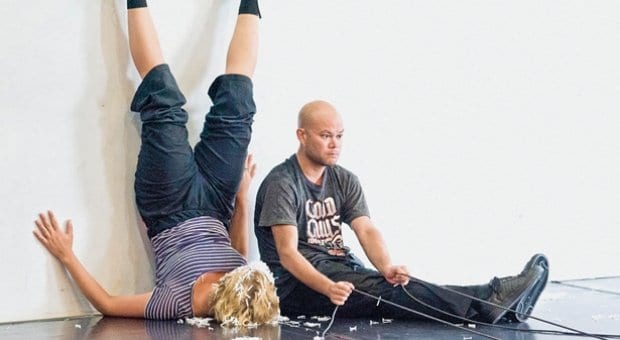Toronto is known for many wonderful things, but being a great party city is not generally one of them. Sure, we have a vibrant theatre scene and some excellent restaurants, but there are few nights of the year when our town really lets down its hair and boogies. Nuit Blanche is one of the best and brightest of these rare occasions.
The concept originated in France back in the mid-1980s when an artistic director named Jean Blaise dreamed up the idea of an all-night festival of culture and art. Other European cities seized upon the theme, opening museums and galleries for a nocturnal celebration that saw millions of citizens exploring their urban centres throughout the wee, small hours. Montreal threw its hat into the ring in 2003, with Toronto following suit in 2006. It was an instant success.
I was there for Nuit Blanche’s inaugural year in Toronto, and it was a magical experience. Parks were lit with light sculptures and dotted with live performance art, dance and music. Roving troubadours entertained young and old with songs, juggling and happy antics. Despite some occasional light rain, thousands of us flooded the streets to revel in the crisp autumn air, indulging in a night of play with our beautiful city.
There’s a lighthearted innocence about the revelry of Nuit Blanche, an insouciance that avoids the boozy, druggy decadence of Pride. It’s a night for fun and wonder, where we are more awed spectator than ecstatic participant; we wander through our magical urban garden, oohing and aahing at the sights and sounds.
One of the most exciting aspects of Nuit Blanche is the mega-endurance spectacles created by local and visiting artists. Among this year’s offerings is a 12-hour dance performance choreographed by Brendan Fernandes in collaboration with Michael Trent and Dancemakers. Night Shift is a “durational performance” inspired by Ballet de la Nuit, an all-night court ballet originally commissioned by Louis XIV. In it, the king had his court prance around for hours, depicting night as a plague upon their society, with rescue arriving at dawn in the person of Louis, who cast himself as the beatific Sun King. Subtle it was not.
Fernandes has taken this concept and adapted it for a modern age. His dancers toil throughout the night, cutting up gold confetti in anticipation of a new day. As the sun rises, the confetti is thrown in celebration and tribute to their nocturnal labour.
“I’m thinking about the ideas of how we are looking for social solidarity, for civil rights,” Fernandes says. “Louis XIV promised his people a new beginning, with new leadership that would be prosperous for them, but in the end he was a selfish king.”
Thankfully, the choreographer is more merciful with his troupe than old Louis was with his long-suffering courtiers. The dancers will perform in shifts, giving opportunities for rest that 17th-century subjects could never have imagined. Still, the level of endurance for each performer is intense.
“In ballet, you never want to show the body in a moment of fatigue,” Fernandes says. “You have to be in this idea of fortitude all the time, and even though they’re taking shifts, it’s still a lot of time to be activated.”
As the pile of gold confetti grows, the performance escalates toward the moment at sunrise when it’s all tossed into the air, a brief, glittering explosion gleaned from hours of effort. “The confetti is a symbol of economy being counterfeit,” Fernandes says. “I’m thinking here of how we pay artists and dancers, how we support them. After 12 hours of task-based creating, it all culminates to one small moment. Then it’s all over.”
Night Shift, Sat, Oct 5, 6:51pm until sunrise, Bay Adelaide Centre, scotiabanknuitblanche.ca

 Why you can trust Xtra
Why you can trust Xtra


